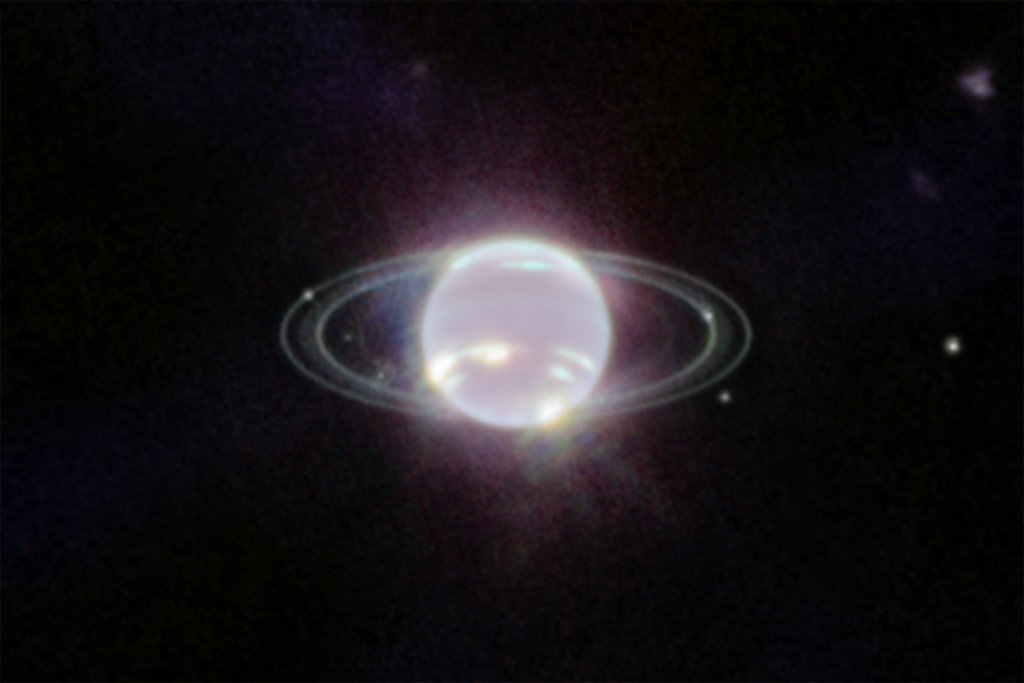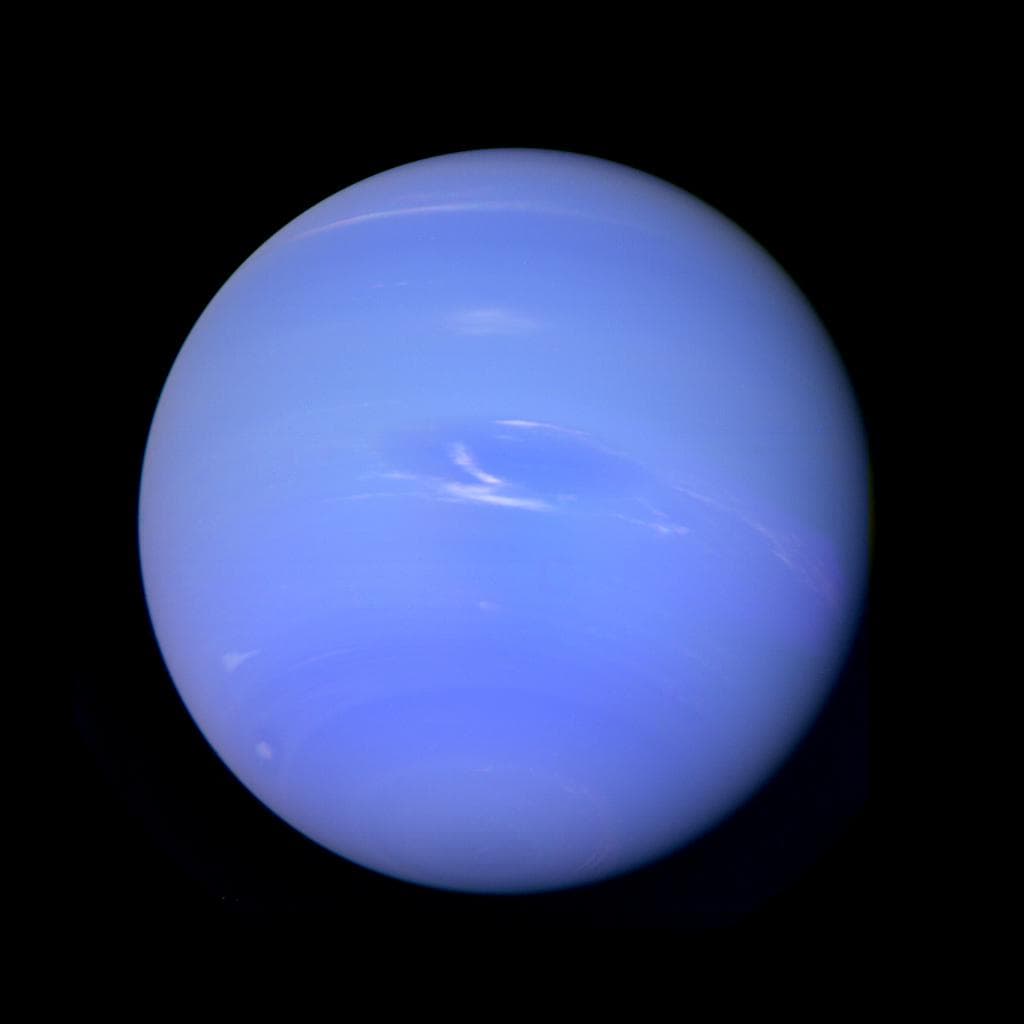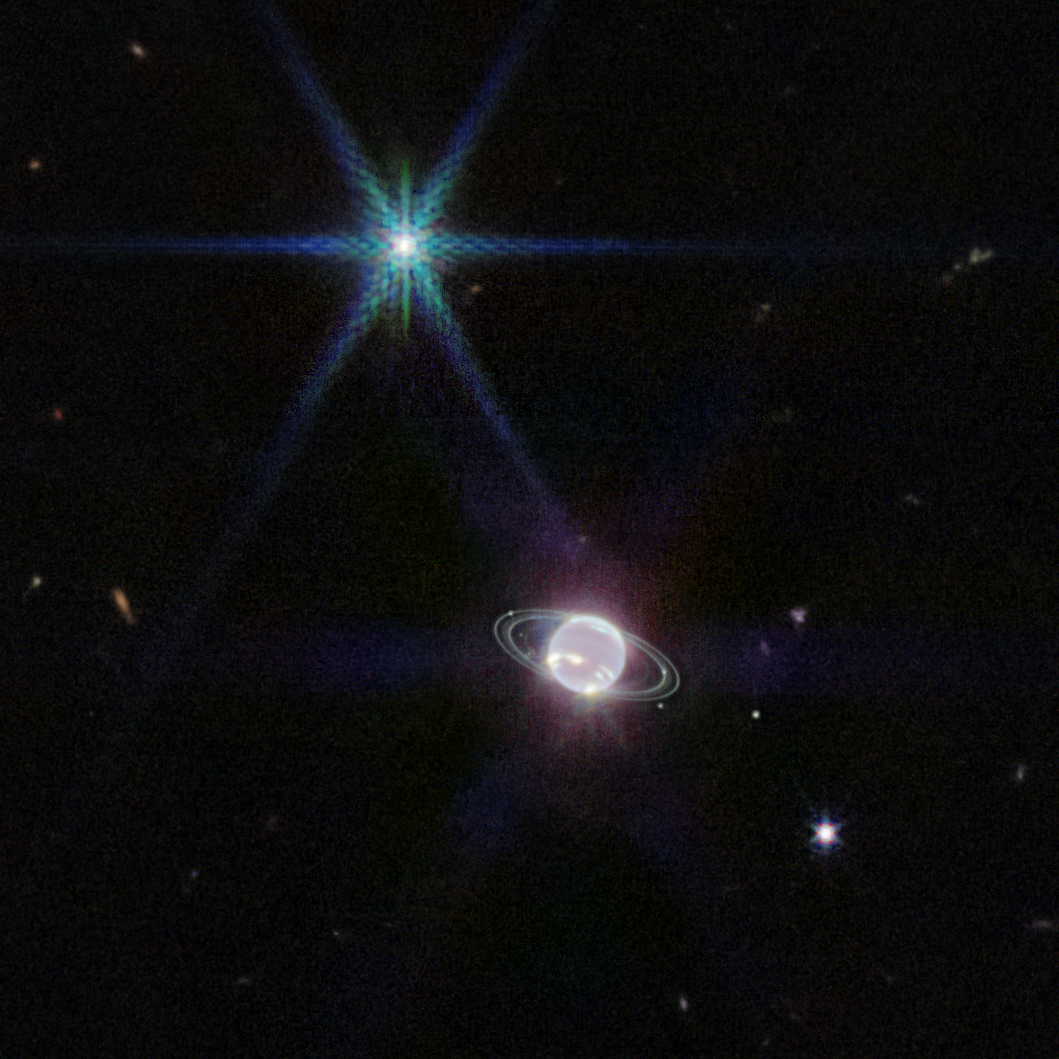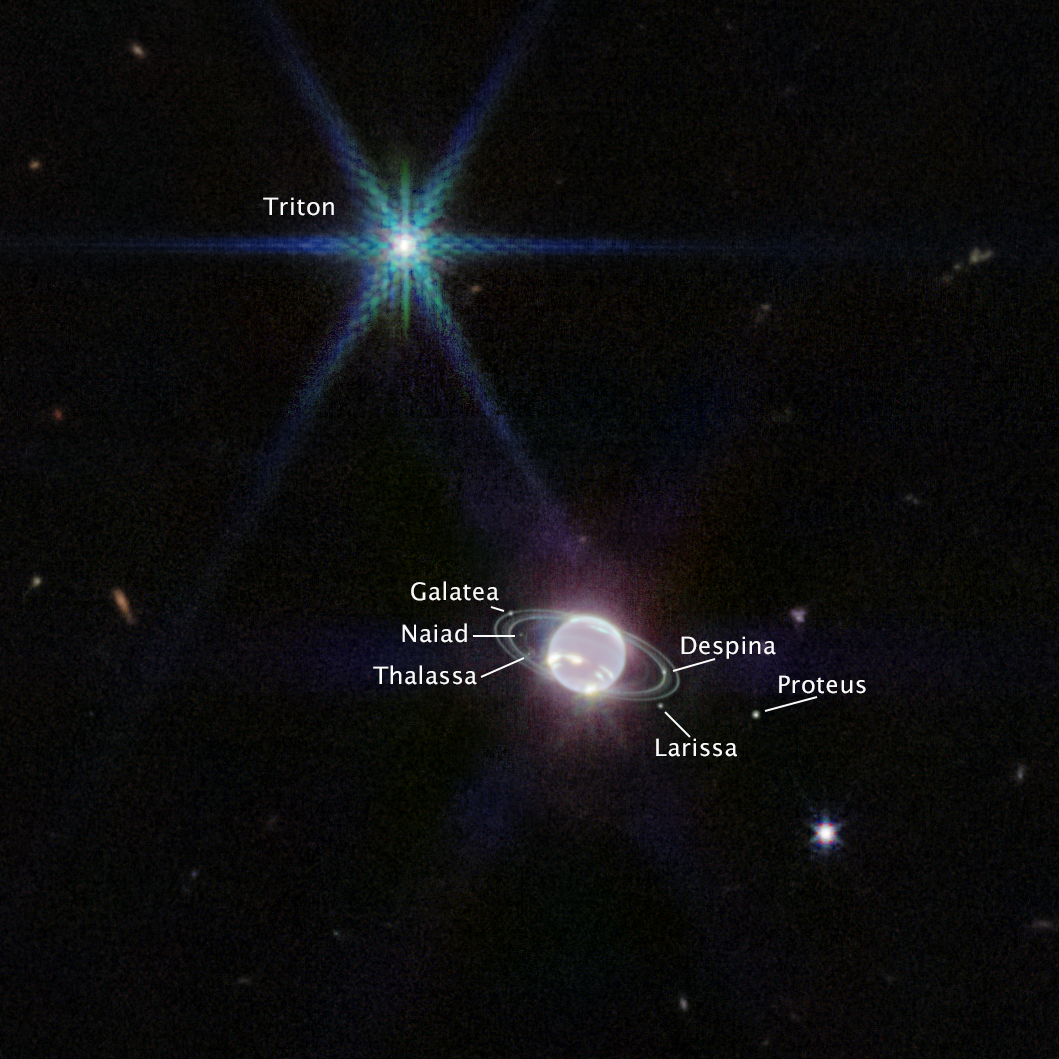NASA has published a picture of Neptune and its rings taken by the James Webb Space Telescope (JWST). This is the clearest image of the ring system of the eighth planet since the Voyager 2 spacecraft.

The farthest planet in the Solar System
To date, Neptune is considered the most distant planet in the Solar system. Its orbit passes at a distance of 4.5 billion km from the Sun. The planet is classified as a gas giant. Under its hydrogen-helium atmosphere is a mantle consisting of a mixture of water, methane and ammonia. In the center there is a stone-ice core.

Due to the significant distance from Earth, Neptune has been studied by only one spacecraft to date. In August 1989, the Voyager 2 probe flew over the planet, transmitting a number of images of its atmosphere, rings, as well as the largest satellite Triton. After 30 years, they remain the most detailed images of Neptune.
Infrared portrait of Neptune
A new portrait of Neptune was obtained using the NIRCam near-infrared camera installed on the JWST. Because the methane gas in its atmosphere absorbs red and infrared light very strongly, the planet appears dark. The exception is high-altitude clouds. They consist of methane ice, which reflects sunlight well. Therefore, in the JWST image, they look like bright stripes and spots.


You can also pay attention to a thin bright strip along the equator of the planet. It points to the global atmospheric circulation fueling the winds and storms of Neptune. The atmosphere above the equator heats up more than in neighboring regions, which causes its increased brightness.
The North Pole of Neptune was out of sight of JWST. As for the South Pole, you can see the vortex and the band of high-latitude clouds surrounding it.
JWST also managed to photograph 7 of the 14 known moons of Neptune. The dominant bright star among them is Triton. It is believed that this is not a “native” moon of Neptune, but a captured Kuiper belt object. Triton is covered with nitrogen ice, which reflects 70% of the sunlight falling on it. Therefore, in the infrared range, it eclipses Neptune, which atmosphere is darkened due to methane.
And finally, the picture shows the structure of Neptune’s rings. They are quite dim in the visible range. Some of them have not been observed by astronomers since the Voyager 2 visit.
According to https://www.nasa.gov
Follow us on Twitter to get the most interesting space news in time
https://twitter.com/ust_magazine
